How to choose and equip a snail terrarium?

The snail terrarium is a complete home in which the molluscs spend most of their time. That is why maximum attention should be paid to its creation. How to choose a house in which unusual land inhabitants will be fully protected from any external threats? How to equip a plastic container and a glass aquarium with your own hands? The answers to these questions are best found before a new pet comes into the house.
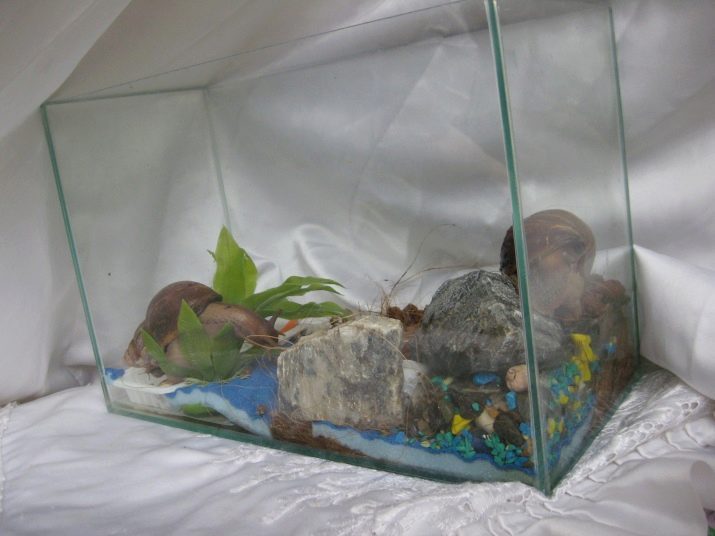
Choice of capacity
A terrarium for snails must be purchased or made by hand without fail - they will not live in banks or in other containers. This can be a large aquarium or a hand-crafted plastic container with clear walls. You will definitely need a cover to avoid unexpected escapes of pets from the house created for them. It is believed that the minimum size of an ulitarium should exceed 45 × 25 × 25 cm.

You cannot choose a plywood box or cardboard box alternative to the aquarium for your snails. In any case, the walls of the container should be smooth, easy to clean and handle.
Horizontal tanks are suitable for almost all snails, but tree species need free space to climb, they buy or prepare a vertically oriented tank.

Volumes
When purchasing a terrarium, even for a very small pet, it is important to remember that mollusks grow throughout life and can reach 20 cm in length. Of course, too large a terrarium will add to the complexity of care and cleaning. The standard volume for 1 snail is calculated from the standard of 10 liters or dm3. It is not recommended to neglect this rule, since a small tank will greatly worsen the conditions for keeping pets.

If the snails are small and grow no more than 5 cm in length, it is permissible to choose more compact containers.
Inside an oversized terrarium, they simply won't find food. It is recommended to choose terrariums that have a simple rectangular or square shape, rounded glass aquariums will pose a danger to snails.
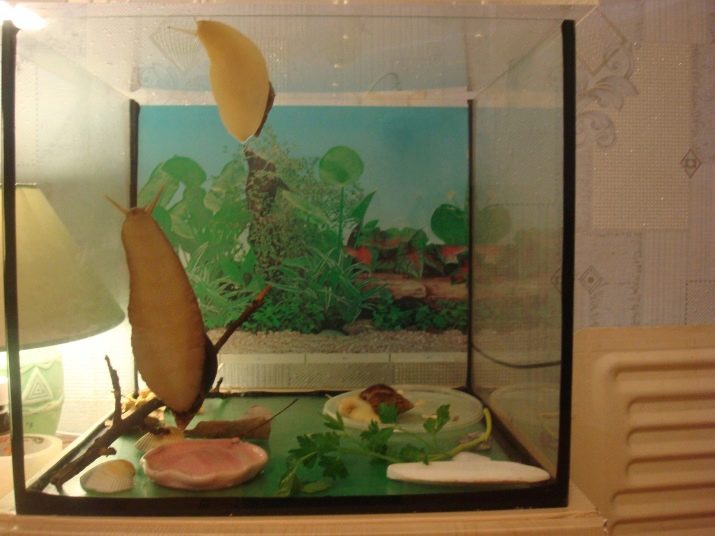
Materials (edit)
When choosing materials for the terrarium in which the snails will live, you should pay attention to the following options:
- glass;
- plastic;
- from plexiglass;
- from plexiglass.
Each of these materials has its own advantages and disadvantages, but in general they have no particular contraindications for use as the basis of a terrarium. If you want to avoid strong temperature changes, you should give preference to options with low thermal conductivity. This property is possessed by polymeric materials - plastic, plexiglass.
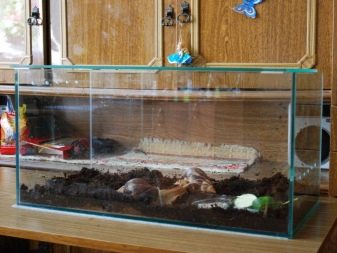
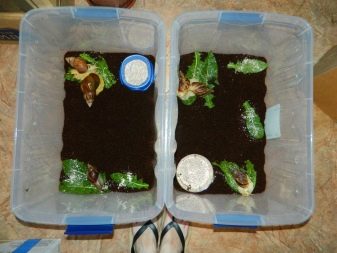


Glass has its own advantages - increased transparency, high mechanical strength and chemical resistance. All these characteristics allow for the convenience of terrarium maintenance.
Besides, watching snails in such a tank is much more convenient and interesting... The increased light transmittance of the material provides the ability to maintain optimal conditions inside the container.


In the pet store, you can mainly buy a ready-made plastic terrarium., but for the snail it will have to be modified, to reduce the number of ventilation holes. Experienced breeders prefer to purchase an ordinary container with a lid with a capacity of 18.5 liters in a household hypermarket and do them with their own hands at the right level and in any desired quantity. Among the disadvantages of this option are opaque walls that make it difficult to observe the pets.
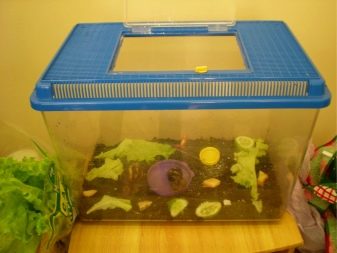
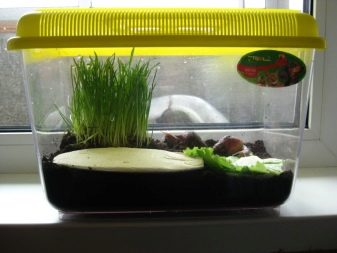
Glass terrariums are most often made to order. They are heavier and require careful handling. But it is possible to obtain a container of the desired size and even configuration.
How to make ventilation?
When choosing an ordinary plastic container for clothes as a terrarium, you can make ventilation holes in it with your own hands. To do this, using a drill or a soldering iron, holes with a diameter of up to 5 mm are made in the walls of the container. Usually one row is located at the top, the other on the opposite wall above the layer of soil substrate. But you do not need to immediately turn the container into a sieve.
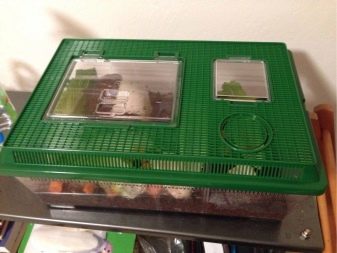
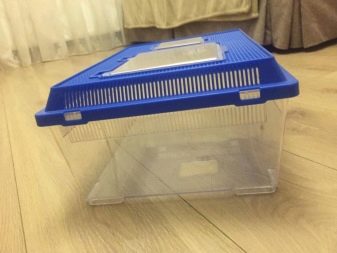
For a start, just one row will be enough. Then observation is carried out. If there are signs of waterlogging in the soil, the moisture level is exceeded, you can drill a second row of ventilation holes.
It is worth considering the breed of snails when creating a ventilation system. If Achatina feels good even at 70% humidity, then woody species need 80-95% for a comfortable existence. If the soil dries quickly, it is enough to simply glue a few holes and adjust the moisture level.
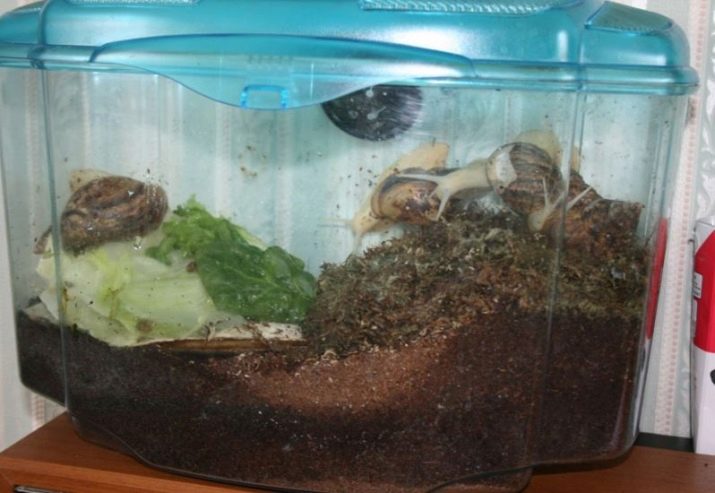
Suitable soil
When setting up a terrarium for land snails, it is extremely important to provide them with high-quality bedding that regulates the microclimate and gives the necessary shelter. The concept of "soil" is very arbitrary here, since the nutrient substrate can be used in different ways. Sand, sawdust, needles, which can injure the delicate body of the pet with their sharp particles, are categorically not suitable for these purposes.
The best option is to use coconut or peat. These bedding options are safe but require preparation prior to use. Specialized snail primer from a pet store will work as well.
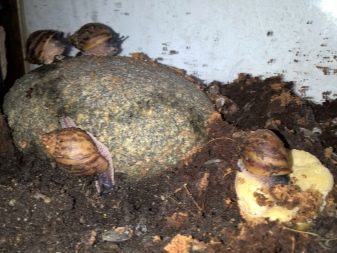

If it is not possible to purchase ready-made substrates, you can use ordinary garden soil.
After pretreatment in the oven (you need to keep it for 20-30 minutes at a temperature above 100 degrees), the earth will be completely safe for further use.
Some snail breeders use litter as bedding. It is used alone or mixed with other types of soils. The foliage allows pets to burrow in, maintaining adequate moisture and shade throughout the day. When buying a ready-made flower substrate, you must make sure that it does not contain dangerous salts and nitrates.
The selected soil is poured into the terrarium in an even layer, the thickness of which is determined by the size of the snail itself.
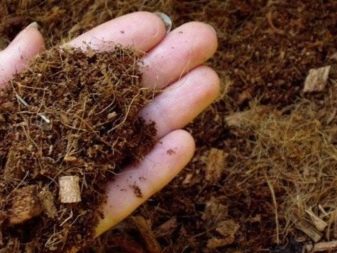
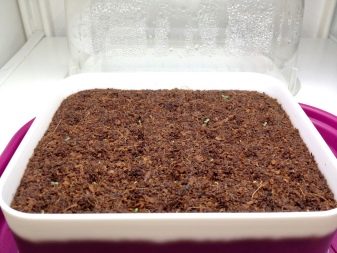
On average, this is 2-12 cm, it must be borne in mind that the substrate layer should allow the pet to completely burrow into it.
In the case of coconut substrate, it is pre-prepared by soaking in boiling water, cooling, rinsing and drying a little. It is recommended to lay soft moss on top of the ground, which allows you to keep the pet's body clean, regulates the humidity and microclimate in the terrarium.

Arrangement and creation of the necessary conditions
In order to properly equip your home snail terrarium, it is very important to take care of creating a comfortable environment in advance. It is important to take into account the peculiarities of the pet's life. It is better for arboreal species to buy a high terrarium, for everyone else the usual horizontal one with a wall height equal to the width will be enough.

Water and air
Despite the fact that land snails breathe atmospheric air, the humidity parameters of the environment are also important for their comfort. Of course, these molluscs do not need a daily shower, but the atmosphere inside the enclosure should be humid. To monitor the state of the environment, a hygrometer and a thermometer must be placed inside the container. Standard parameters for keeping snails:
- air temperature - from +25 to +27 degrees;
- humidity - 75-90% (the highest is needed for tree snails).
In order to ensure the supply of fresh air, it is imperative to make the necessary ventilation holes in the terrarium.
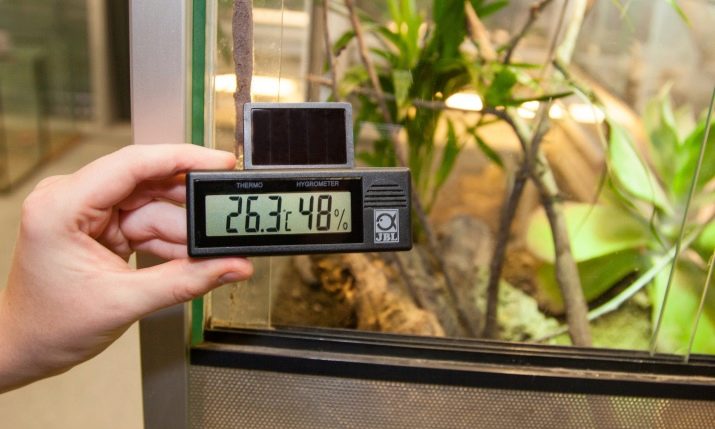
In a glass aquarium, a mesh top is installed on the frame with additional snap fasteners.
The temperature in the terrarium must not be allowed to drop below +12 degrees, since under these conditions the snails can go into hibernation. As a heat source, you need to use thermal mats or cords, special lamps. The terrarium should not be placed directly on the heating source; it is better to place it on the wall near the radiator.
The snail breeder also has to manually maintain the optimal humidity regime inside the tank. Moisture is sprayed with a flower sprayer. This procedure is carried out 1-2 times a day.
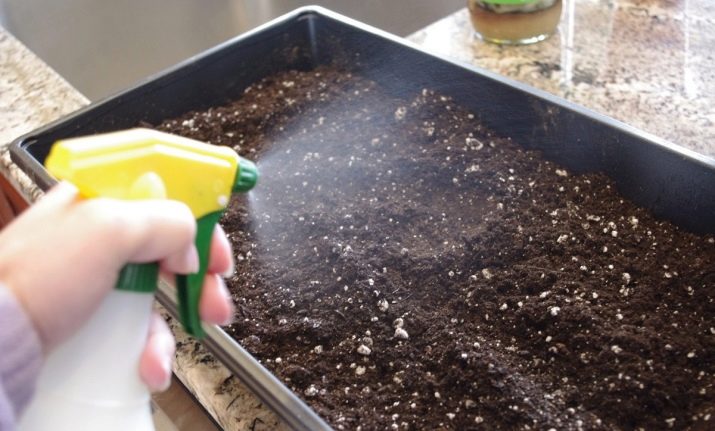
Drinking bowls and feeders
The snail drinker most often plays the role of a bath or pool, so it must fully comply with safety requirements, be easy to clean and remove from the terrarium. But at the same time, the drinker must be securely fastened inside the soil, otherwise it will easily move. It will be convenient to adapt for these purposes disposable plastic dishes without sharp edges, plastic or silicone lids for jars. You should not use glass, ceramic and any other rigid types of materials.

Decorating options
The terrarium used for keeping snails not only needs to be prepared but also decorated. As a decor, it is not enough just to put a snag or to place unpretentious plants. With the right approach, you can recreate the atmosphere of a spectacular rainforest full of exotic decorations inside.
Don't buy the first decorations you come across.
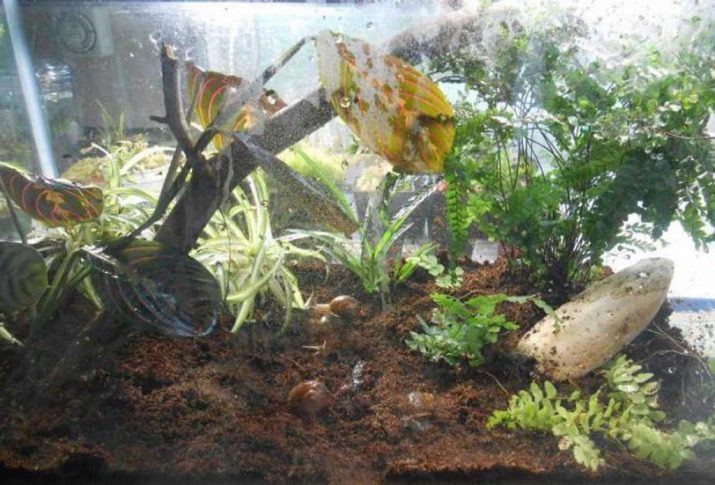
Any ceramic and clay decorations are not recommended - pots, castles, imitation of stones and snags. About such a decor, a snail can injure the body, in addition, with the active behavior of pets, they will be threatened with damage to the shell when falling.
Living vegetation will be the best decoration for a tropical aquarium. Sprouted grains of wheat or lettuce can be planted as snail treats. Pets will be happy to eat young growth. You can plant succulents with thick fleshy stems, ferns, tradescantia in the soil. They are varied in shape, look spectacular, but are not of food interest for the snail.
Sphagnum looks beautiful as a decoration, as well as moss bumps, bark of deciduous trees. As a shelter, you can use half of a coconut shell, laying out the soil next to oak and birch leaves. You can place a driftwood inside without sharp edges. Any decorations of natural origin must be pretreated from bacteria and parasites.
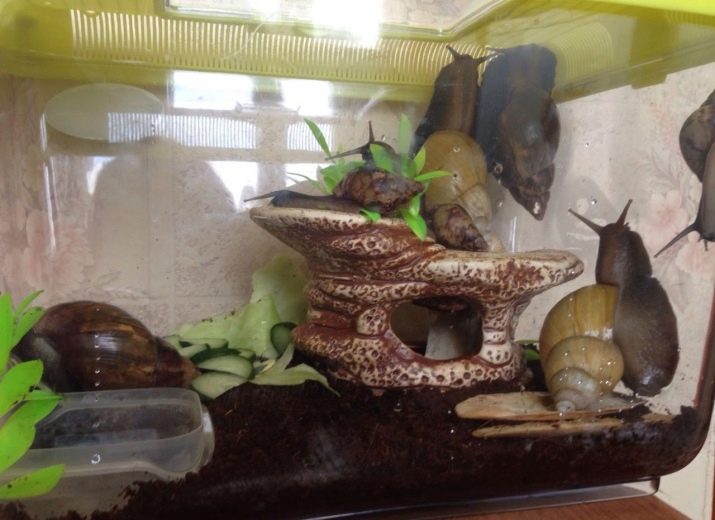
Where to put the container?
Land snails are predominantly nocturnal, preferring to hide from bright sunlight in the ground. That is why when choosing a place for installing a terrarium, you should give preference to a shaded corner, in which contact with direct sunlight is excluded.
It is not recommended to install it on windowsills on the south side. Drafts are dangerous for snails, so it is better to avoid them so as not to provoke illness or death of pets.

Do not place the terrarium directly over a radiator or near a heater. Constant overheating can lead to the death of shellfish. It is recommended to create artificial shading around the container using fresh indoor flowers or other decorations.
How to equip a snail terrarium, see below.








